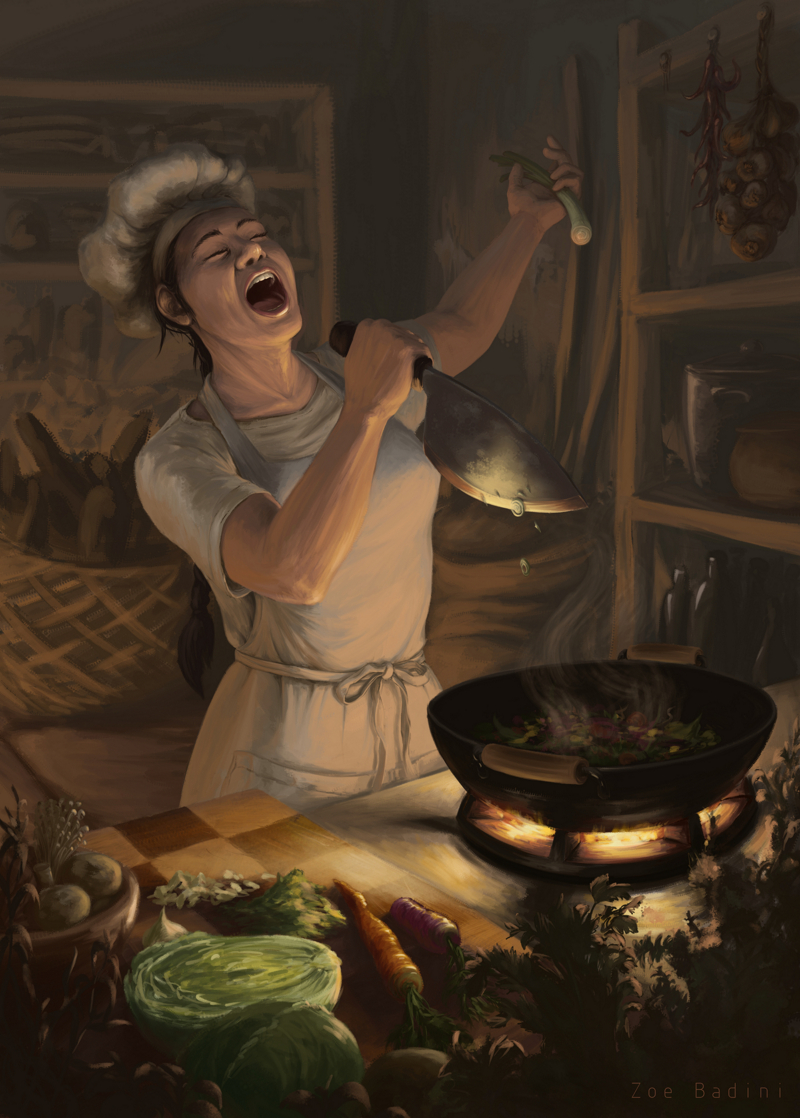Galley Kitchen
Galley kitchens serves as a tightly spaced food preparation area, with a line of cabinets that may exist on one or both sides of an aisle. This allows maximum use of restricted space, with storage space improved by hanging pots, racks and cabinets placed immediately above and below the cooking area. A fire for cooking is built upon a raised, open stone box, with a flue or opening above.
Galleys without a firebox may employ a campfire for cooking purposes. This is typically the arrangement of a cookwagon, which can have shelves on the outside that swing down for use, only to be lifted and locked for travel; cabinets and storage bins are also attached to the outside of the wagon. A large vardo built specifically for cooking benefits from having an enclosed galley on the inside, while employing elements of the cookwagon on the exterior. Aboard ship, the galley is called a camboose, shortened in English to "caboose." With a ship, the firebox is made so that an existing fire can be swept outside — by use of a hinged door on the hull exterior — in case of battle or storm.
Food Choices
The galley kitchen is capable of producing simple recipe-based foods, such as breads, soups, marinated meat and sauces, that can be stored in crockery jars, safely in cabinets, which if carried would tend to slop or break. This increases the quality of food, making it superior to campfire or cold camp fare. The specific benefit is the storage of fresh foods, such as leafy vegetables, fruits, meats, milk and cream. These can be preserved for 2-12 days, depending. Additionally, herbs can be stored for easy access, such as basil, chamomile, cumin, dill, rosemary, parsley and sage, as well as dried tea leaves and beans for roasted coffee.
Construction
As they are elaborate affairs, requiring metal pieces, brick and stone, galley kitchens are more expensive, foot-for-foot, than other rooms in a house. As they must be built to the owner's specifications, contingent upon the available space and materials, an exact price cannot be given. Traditionally, a single cook can operate in a space as small as 6 by 8 ft., though any cook would be far happier in a space that was at least 8 by 10, or 8 by 12. The size of firebox greatly determines how much food can be produced in a given hour.
See The Adventure
